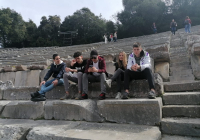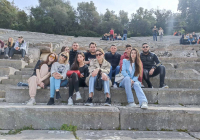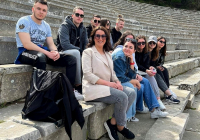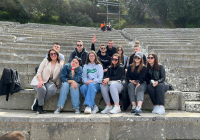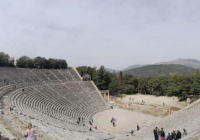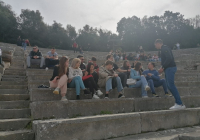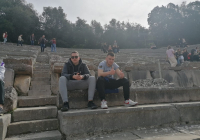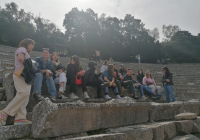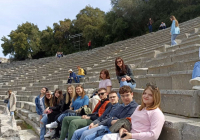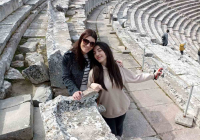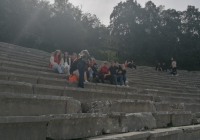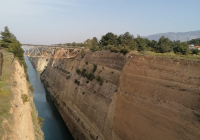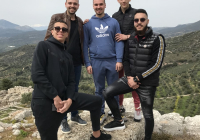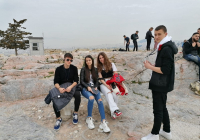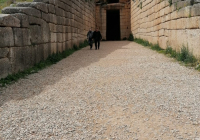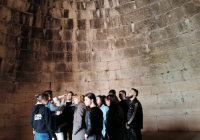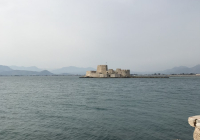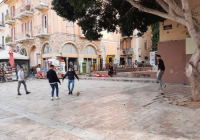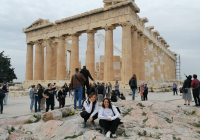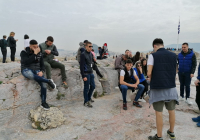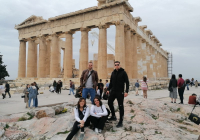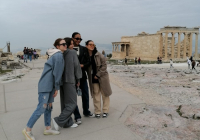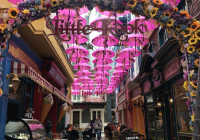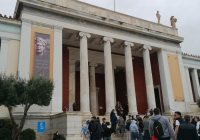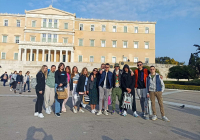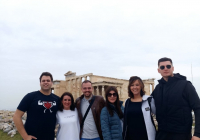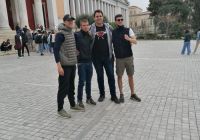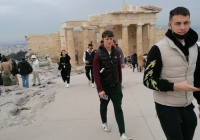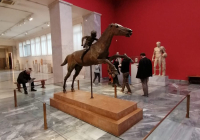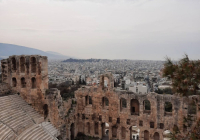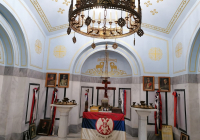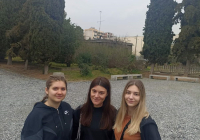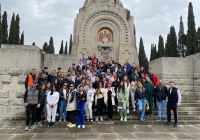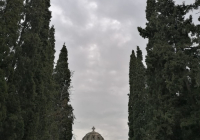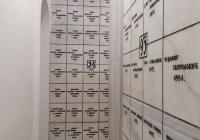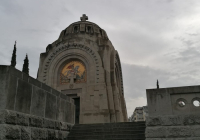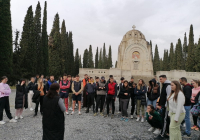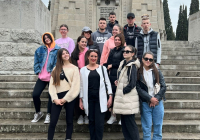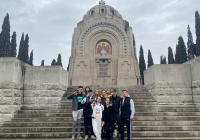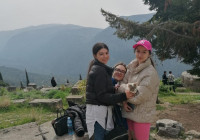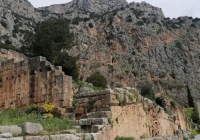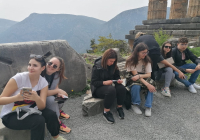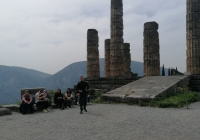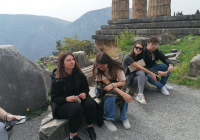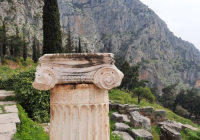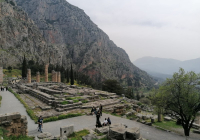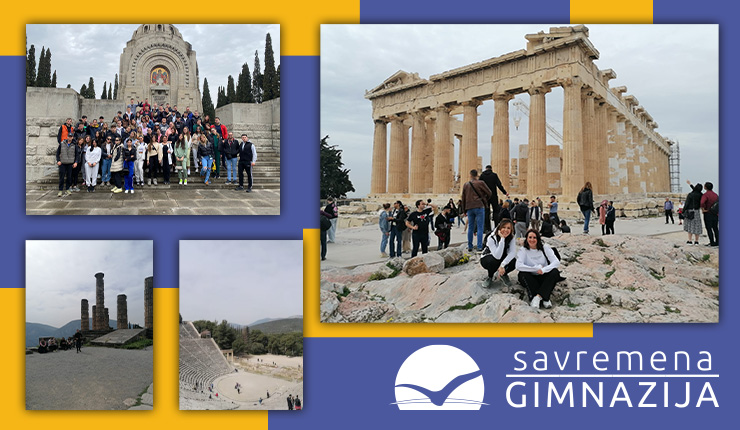
This April our Year 3 students visited Greece and enjoyed touring the places such as the city of Thessaloniki, the Meteora monasteries, the ancient theatre of Epidaurus, the ancient city of Mycenae, the sacred place of Acropolis, the archaeological site of Delphi, the Serbian military cemetery Zeitenlik and many other historic sights.
Day 1 of their study trip the students spent in Thessaloniki touring it on a bus, while the next day they visited the Meteora.
Day 3 marked by visit to Mycenae, the cradle of the European culture
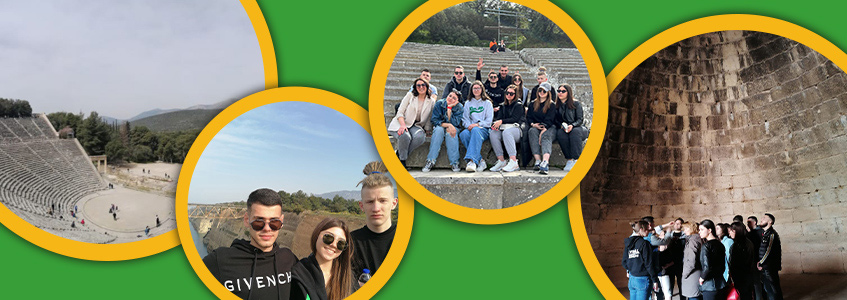 Day 3 was devoted to trip to Argolis, which encopasses Epidaurus, the ancient theatre from 4th century B.C. and the most acoustic structure of its kind in the world, Nafplio – the first ever capital of Greece, where is a famous Venetian fortress, Mycenae – the cradle of the European culture. The students could see the Lion Gate, the Treasury of Atreus, the king’s tomb, and the megaron. During the tour, the stop was made at the Corinth canal so our students could see it and learn about its origin.
Day 3 was devoted to trip to Argolis, which encopasses Epidaurus, the ancient theatre from 4th century B.C. and the most acoustic structure of its kind in the world, Nafplio – the first ever capital of Greece, where is a famous Venetian fortress, Mycenae – the cradle of the European culture. The students could see the Lion Gate, the Treasury of Atreus, the king’s tomb, and the megaron. During the tour, the stop was made at the Corinth canal so our students could see it and learn about its origin.
Doing sightseeing of the historic sites in Athens
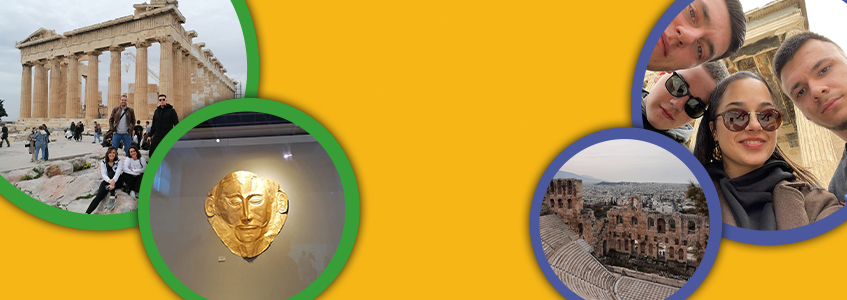 Days 4 and 5, as planned, were devoted to sightseeing of Athens, its central squares, Syntagma and Omonia, the Olympic Stadium, the Temple of Zeus, the Arch of Hadrian, the university, library and parliament. The visit to Acropolis and the Archaeological Museum, the most important museum in the world which is dedicated to Greek culture. The students could see more than 11000 exhibits, among which some of the most famous ancient statues and vases, the frescos from Santorini, valuable items and jewellery from Crete.
Days 4 and 5, as planned, were devoted to sightseeing of Athens, its central squares, Syntagma and Omonia, the Olympic Stadium, the Temple of Zeus, the Arch of Hadrian, the university, library and parliament. The visit to Acropolis and the Archaeological Museum, the most important museum in the world which is dedicated to Greek culture. The students could see more than 11000 exhibits, among which some of the most famous ancient statues and vases, the frescos from Santorini, valuable items and jewellery from Crete.
Archaeological site Delphi and Serbian military cemetery in Zeitenlik
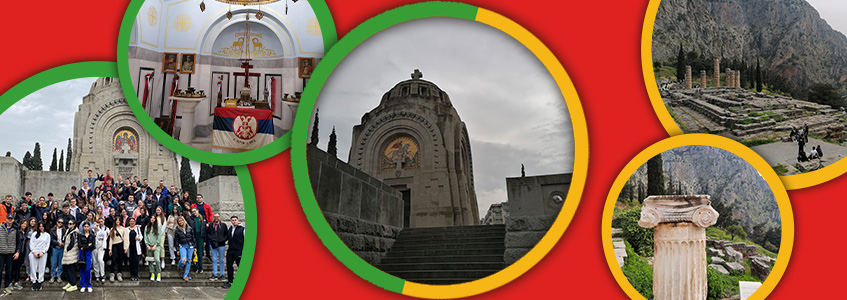 Day 6 was reserved for the visit to Delphi, the archaeological site, where there used to be the home of Sibyl, the priestess of the Temple of Apollo. Delphi was considered to be the centre of the world. As of 1987 this site is included in the UNESCO world heritage list.
Day 6 was reserved for the visit to Delphi, the archaeological site, where there used to be the home of Sibyl, the priestess of the Temple of Apollo. Delphi was considered to be the centre of the world. As of 1987 this site is included in the UNESCO world heritage list.
Day 7 of this study trip will be remembered for the visit to the Serbian military cemetery Zeitenlik.

